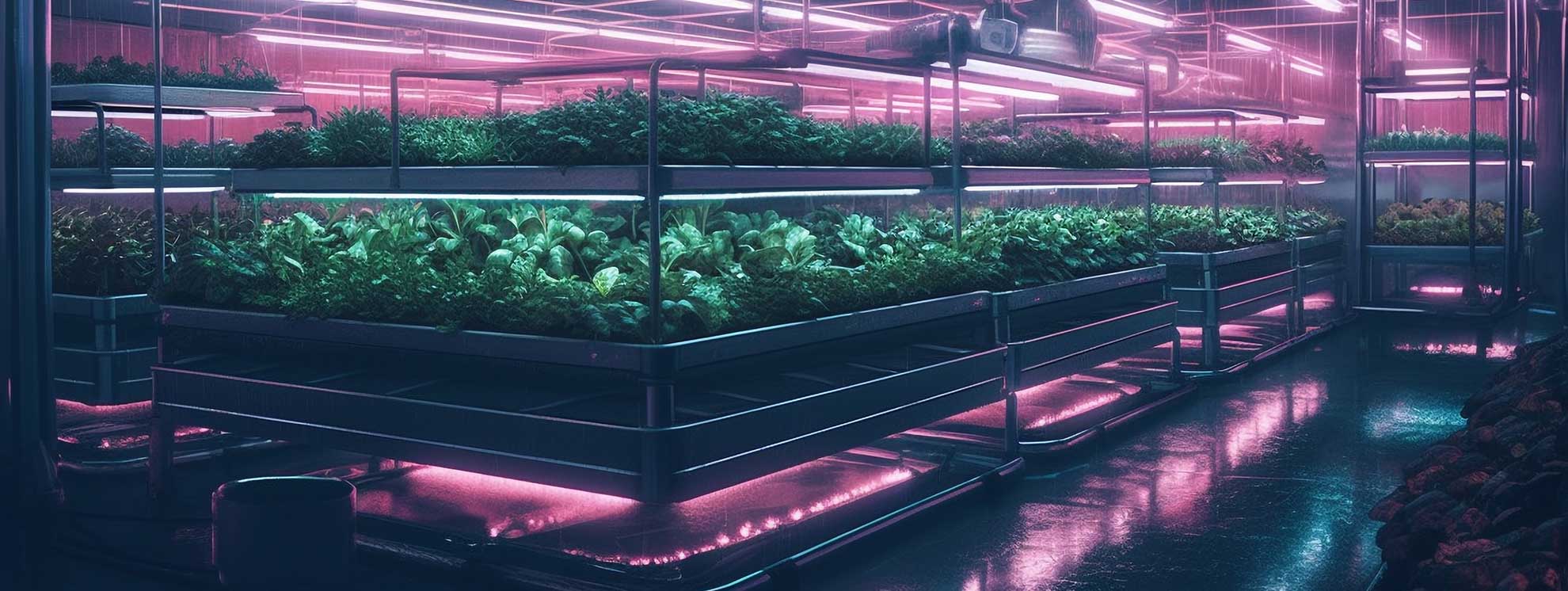Vertical farming is the future
Embrace the Future of Farming: The Benefits of Vertical Farming
Vertical farming is a new revolution in agriculture that takes advantage of growing crops in vertically stacked layers in an indoor controlled environment.
Maximization of Space and Yield
Since the 1960s, the amount of arable land per person has diminished from about 0.36 to 0.18 hectares/person, meaning the agriculture industry now needs to feed many more people in much less space. Traditional farming is typically associated with large-scale uses of land, creating a challenge because of increased urbanization, drought brought about by climate change, erosion, and pollution. Indoor vertical farms in an urban environment and inside deserted buildings use the vertical space to increase crop yield per square-foot of occupied land dramatically. Additionally, indoor vertical farms can be built on land that is not otherwise suitable for farming such as urban environments, desert lands, cold climates, etc. This innovative approach helps to grow more in less area to overcome the problem of arable land availability and increasing overall productivity of the agriculture industry.
The ability to locate vertical farms in an urban location brings crops closer to consumers, reducing transportation costs and related carbon emissions, making the supply chain much more cost effective and greener. Spaces within the urban landscape can be utilized by establishing vertical farms that become fully integrated into city infrastructure, contributing to urban sustainability.
Ensures Climate Change Resilience and Stability of Production
Traditional outdoor farmers are primarily concerned with the weather because it is unpredictable, and the success or failure of a crop is dependent upon it. Vertical farming provides a controlled environment where parameters like temperature, humidity, and lighting can be regulated. This control protects crops from adverse weather conditions and also makes farming possible year-round, providing a steady and reliable supply of crops, regardless of weather conditions.
Extreme climate conditions, such as drought, flooding, and storms, can take an enormous toll on crop productivity. This uncertainty is mitigated with controlled environment vertical farming. This resilience remains valuable when climatic change upsets traditional farming practices. Vertical farming ensures growers steady production, food security, and market supply.

Lowering Pesticide and Herbicide Use
A benefit of vertical farming is the reduced use of pesticides and herbicides, helping to reduce their environmental impact. These chemicals play a crucial role in controlling pests and weeds in conventional farming processes, although they adversely affect the environment and human health. Therefore, the controlled environments reduce the probability of insect and weed infestations, thus reducing the need for these harmful chemicals.
Pests and weeds can be controlled by preventing their entry into the facility, and by practicing good crop management techniques, thereby reducing chemical use and ultimately making crops healthier, the environment cleaner, and meeting the growing consumer demand for ecologically produced food.
Improving Technology and Innovation
Vertical farming enables efficient practices in agriculture. Major technological breakthroughs in vertical farming include the following.
LED Lighting:
Advances in LED technology can now create light spectra targeted to crop needs, thus optimizing energy and growth. LEDs use less energy and have a longer lifespan than traditional lighting systems; therefore, operational costs decrease over time.
Automation and Robotics:
Automation reduces labor costs and increases productivity with automated planting, monitoring, and harvesting. Robotic systems can quickly carry out repetitive tasks to minimize human error and help to mitigate a volatile labour market.
Hydroponics and Aeroponics:
Hydroponics is a technique where plants are grown in a water with nutrients, while aeroponics is a technique where plant are grown in air while their roots misted with a nutrient solution. These soil-free systems allow for precise control over the delivery of nutrients and enable efficient water use, thus enabling vertical farming in regions suffering with limited availability of water.
Data Analytics and AI:
To maximize output and minimize errors, modern vertical farms use data analytics and artificial intelligence to monitor crop health and predict, and more importantly optimize, crop yields with effective crop-steering. These technologies help prevent potential problems and improve general farm performance.
Risks and Challenges
Though there are many advantages of vertical farming, there are also challenges.
Capital Investment:
he infrastructure needed for vertical farming including a purpose-built facility, lighting, climate control, and automation, is capital intensive. However, many of these are becoming more cost effective as technology advances, and with larger and larger canopies, economies of scale become more important. Upfront capital investment can also be reduced due to incentives offered by governments because of the reliability of controlled environment agriculture despite climate change and the improvement to food security and safety.
Energy Consumption:
Artificial lighting and climate control systems are energy intensive. To help mitigate the cost of energy, many vertical farms are being built with or even co-located with solar panels & solar farms, wind turbines, and geo-thermal plants. These energy-efficient practices can not only reduce operating costs but also reduce the carbon footprints of vertical farms.
Conclusion
Vertical farming is a bold step into the future for sustainable and resilient agriculture. By maximizing space, ensuring consistent productivity, reducing the use of chemicals, and with the technological advancements in this industry; this movement can revolutionize food production.
